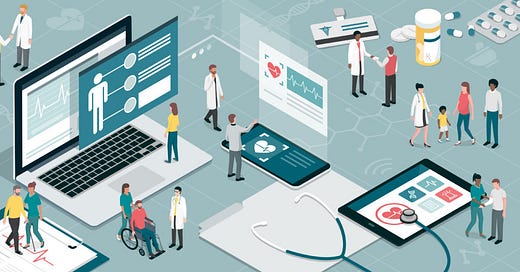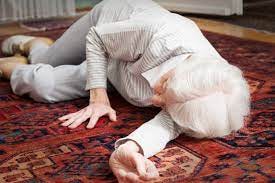A while back, I worked a shift in A&E where I managed a 89-year-old woman with a syncope episode. She was feeling slightly “rough” a few days prior to the episode. She doesn’t do much at home besides mobilising to the toilet and this is when she felt very lightheaded. She lowered herself to the ground and described a “blacking out” episode for a few seconds. Her son came to check on her and found her on the floor so called an ambulance.
She was well on assessment but very frail. She had a lovely family who have been pushing for her to have carers for a while. The patient maintained that she was okay and that she could handle things herself but even I, having only just met her could see that she needed some support. Her blood pressure dropped from 138/92 —> 109/73. Her heart rate was okay but her saturations were 94-95%. Upon doing a chest XR she was found to have right basal consolidation which suggested that she had syncope secondary to frailty and a lower respiratory tract infection. “Well done Mo” I thought on getting the diagnosis.. but I had done nothing to help the patient overcome her condition.
At this point my brain was shouting (or thinking?) “ADMISSION, ADMISSION, ADMISSION” until my consultant suggested another way. The reality was that she wasn’t too bad clinically. She mobilised to the toilet and whilst she had a positive chest XR, her white cell count was 13 and her CRP 63. She was also on some anti-hypertension therapy and diuretics which definitely wasn’t helping her syncope but with a background of heart failure, was it wise to stop this?
My consultant suggested virtual ward and boy did they help!
The idea behind virtual ward is simple.
It is to provide patients with ward-like care at home.
Through effective research we recognise that many frail patients can be managed with simple measures at home. We also know that hospital admission isn’t always effective in elderly people as it can worsen both the clinical and mental condition of a patient. Some of these patients can be turned around quite quickly with a few rounds of oral or intravenous treatment which could even be given at home. Finally, it certainly isn’t in the hospitals interest to admit every frail person with an acute medical issue.
To address all of these factors virtual ward has become the golden nugget.
Virtual ward seeks to provide hospital-like care at home. It uses an extensive network of doctors and nurses as well as mobile technology to regularly check up on patients, order investigations and even instigate oral and intravenous treatment.
I called virtual ward at my hospital and discussed the patient in detail. The nurse on the other side asked me exactly what I felt virtual ward could do for her. I didn’t really know at the time but broadly asked if they could oversee her antibiotic treatment, address issues of her frailty including organising occupational therapy to make adjustments at home and finally, reconcile her medications to reduce her chances of having another syncopal episode.
They agreed to follow up the patient the next day. Sorted.
Since then I’ve called upon virtual ward a fair few times. These patients can go onto have blood tests, echocardiograms, ECGs and even chest X-rays in the local hospital. Some patients receive treatment in the form of iron infusions and IV antibiotic treatments and virtual ward staff meet daily with an elderly care consultant to discuss patient care.
On the notes - it reads like a ward round but all the action is actually taking place at the patients home.
The follow up is quite close and members of the MDT have come together to create clear management and admission criteria for these patients. There has also been a huge adoption of mobile technology. I’ve seen mobile ECG machines, spirometry, and other cool contraptions to get the data required for effective clinical care. The service is integrated well with community care as they are able to call upon physios, OT, social care, district nurses, GPs and others to help with patient recovery.
NICE have recently voiced their commitment to virtual wards. They have committed to creating 40-50 virtual ward “beds” per 100,000 population which is a huge task. The idea of it sounds quite nice but instituting the staffing, training and network required to manage such a caseload will be tough.
I would highly recommend getting virtual ward involved early. Each CCG now has guidance on virtual ward so I’d recommend tracking these down. It’s an awesome service and you’ll get lots of brownie points and perhaps some sloppy kisses from patients who really don’t want to be admitted/want to go home!
There’s also going to be a huge drive in getting doctors, PAs, ACPs and pharmacists to specialise in elderly care in light of this and if you have an interest in elderly care - this is an awesome chance to get involved!
Have you had any good experiences with virtual ward? Do reply to this post for us to get to hear your views!
Also — pleaseeeee like and share our newsletter. We’ve been getting some awesome feedback from ya’ll about our newsletter and we really want to extend our subscriber list.
We love sharing our insights and we’d like to continue to share them with more and more people each week.
Check us out on our various pages
Website: www.paretoeducation.co.uk
Instagram: www.instagram.com/pareto_ed
Twitter: www.twitter.com/pareto_ed
Youtube: https://bit.ly/3DPm23c
Email: paretopaeducation@gmail.com





